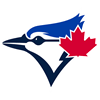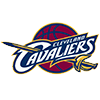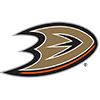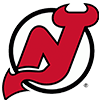This fantasy football Draft Strategy article looks at the current ADP and identify the best fantasy football draft strategy/strategies for the draft slots 4 through 6, which in a snake draft would leave you with one of selections 19-21 in the second round, selections 43-through-45 in the fourth round, and so on.
To read the article about slots 1-3, click here.
The first three rounds are a crucial point in the determination of your fantasy football draft strategy not just because they should generally be your best players, but because the early course you set will determine your initial points of positional strength and weakness. It's important to weigh those strengths and weaknesses against your forecast options in upcoming rounds, devising a broader plan to account for those weaknesses so that you're as strong as possible for the draft slots you've been assigned.
You can't build a juggernaut right off the bat. It's a longer task that requires both foresight – knowing the ADP and your slot's placement relative to the ADP – as well as in-draft adjustment so that you're not caught unprotected when the unexpected occurs.
It's important to track your own investments relative to the development of positional markets once your draft gets under way. This way you can create and adjust your plan in real time depending on which positional runs occur in the draft, doing your best to stay at the front of such positional runs.
Sometimes you might need to participate in
This fantasy football Draft Strategy article looks at the current ADP and identify the best fantasy football draft strategy/strategies for the draft slots 4 through 6, which in a snake draft would leave you with one of selections 19-21 in the second round, selections 43-through-45 in the fourth round, and so on.
To read the article about slots 1-3, click here.
The first three rounds are a crucial point in the determination of your fantasy football draft strategy not just because they should generally be your best players, but because the early course you set will determine your initial points of positional strength and weakness. It's important to weigh those strengths and weaknesses against your forecast options in upcoming rounds, devising a broader plan to account for those weaknesses so that you're as strong as possible for the draft slots you've been assigned.
You can't build a juggernaut right off the bat. It's a longer task that requires both foresight – knowing the ADP and your slot's placement relative to the ADP – as well as in-draft adjustment so that you're not caught unprotected when the unexpected occurs.
It's important to track your own investments relative to the development of positional markets once your draft gets under way. This way you can create and adjust your plan in real time depending on which positional runs occur in the draft, doing your best to stay at the front of such positional runs.
Sometimes you might need to participate in the tail-end of a positional run if you get caught in a truly difficult spot, but it's far more ideal to start a positional run so that you can get the top swipe of value at the position before the other drafters start scrambling for worse pieces of the pie after you. Having a viable plan for a balanced roster throughout various contingencies is key to keeping your draft picks occurring on your own terms instead of chasing market developments left and right.
Check out the industry-leading fantasy football live draft assistant to get custom rankings for your league and follow along with a live draft on most major platforms!
FIRST ROUND (Picks 4-through-6)
In this range of the first round you generally won't get a shot at Ja'Marr Chase (1.21 NFFC) or Bijan Robinson (2.37), and any of Jahmyr Gibbs (3.86), Justin Jefferson (4.77) or Saquon Barkley (5.41) is liable to go third. Of course, at least two of Gibbs, Jefferson and Barkley will be available at the fourth pick in nearly every draft.
Moreover, there's an additional, relatively long list of names up for serious consideration after the big five of Chase, Robinson, Gibbs, Jefferson and Barkley. As much as those five might be the most coveted, options like CeeDee Lamb (5.79), Malik Nabers (9.38), Ashton Jeanty (10.0), Amon-Ra St. Brown (10.66), Puka Nacua (10.76) and Christian McCaffrey (10.83) all sometimes go as high as sixth overall, with Lamb likely being the clearest standout of that group. With that said, McCaffrey and Nacua have recent histories of producing at per-snap rates that could put them atop their position with enough snaps.
These players don't need cases made for them. If you have a clear preference or distaste for one or another it doesn't really matter – what matters more is what you do after that first pick. The specific choice you make will narrow your course in the upcoming rounds, but planning correctly for that subsequent course does matter.
Some evergreen strategy disclaimer from the first article:
Regardless of which player you take at this selection you'll want to budget you subsequent picks with your remaining needs in mind. For example, if you go with a running back then it might make it difficult to take a running back with your second or third-round selection, if only because most formats require three starting wide receivers but only two running backs.
That isn't to say you can't make running back the selection for two of your first three picks, but if you do so you might need to prepare to go a bit thin at wide receiver, because by the fourth round there generally are not any consensus WR2 types still on the board.
While there is no one best fantasy football draft strategy, you'll want to make sure you forge ahead in a way where you're not caught off guard in the subsequent rounds. It's one thing to knowingly take a risk (ie., two RBs in the first three rounds), but it's worse to be caught off guard because you can't control your recourse at that point.
Note: It's generally easier to execute a Zero RB strategy – which basically just means going very cheap at running back – than it is to execute a cheap wide receiver strategy, especially in re-draft leagues. You only need to start two running backs, whereas at receiver you need to start at least three. Scraping together one or two running backs is easier than bargain hunting for three starting receivers."
Check out our fantasy football ADP report for a comprehensive tool with live-updated ADP data for multiple league formats and sites.
SECOND ROUND (Picks 19-through-21)
In this range of the ADP you're most likely to see A.J. Brown (19.91), Ladd McConkey (20.01), Brock Bowers (20.24), Bucky Irving (20.83) and Jonathan Taylor (22.34).
Names like Josh Jacobs (23.58), Chase Brown (24.74), Garrett Wilson (24.78), Lamar Jackson (25.65), Trey McBride (26.2) and Josh Allen (27.02) would also be at risk of being gone by the time of your third pick (28-through-30).
Given the first-round ADP, it's likely that this pick as either spent on a wide receiver (Lamb, Nacua, Nabers, etc.) or a running back (Jeanty or McCaffrey).
If you went with Jeanty or McCaffrey in the first you'll likely want at least one wide receiver in your second and third selections. In this range the likes of Brown, McConkey and Wilson are likely your best potential options, but even they are not guaranteed to make it to any particular slot, especially if you're waiting for the 21st pick.
In this sense it's probably ideal to go wide receiver if you have a slot at 4-through-6, because taking McCaffrey or Jeanty at seven or later makes it easier to get a potential WR1 in the second round. Taking Jeanty or McCaffrey at No. 6 makes it easy to end up with someone more like Tyreek Hill (29.58) or Jaxon Smith-Njigba (29.76) as your WR1.
THIRD ROUND (Picks 28-through-30)
As mentioned in the SECOND ROUND considerations, the likes of Jacobs, Brown, Wilson, Jackson, McBride and Allen are not guaranteed to make it this far. If they do, you might consider it something of a lucky break.
More likely you'll be looking at players such as: Hill, Smith-Njigba, Kyren Williams (28.73), Tee Higgins (30.42) and Breece Hall (33.77). Between that group and the previous one, there should be decent supply at both running back and wide receiver at your third pick.
It's certainly justifiable to draft a quarterback (Jackson/Allen) or tight end (Bowers/McBride) in the second round, but only Bowers' ADP is apace with the slot placement. In other words, it would be a slight ADP reach to take McBride or one of the quarterbacks. It might therefore be a little more conventional to go some combination of running back and wide receiver in the first three rounds.
FOURTH ROUND (Picks 43-through-45) and FIFTH ROUND (Picks 52-through-54)
By this range in the draft you might see more deviations from the established ADP, so make sure you're watching for such developments as the draft moves along. Generally, though, you'll likely see some collection of the following names in your fourth/fifth-round slot range:
Jalen Hurts (43.17)
Kenneth Walker (43.47)
DJ Moore (43.92)
Xavier Worthy (44.79)
DK Metcalf (46.52)
Alvin Kamara (47.58)
Chuba Hubbard (48.4)
Courtland Sutton (49.59)
Jameson Williams (51.24)
Tetairoa McMillan (51.35)
DeVonta Smith (54.1)
Zay Flowers (55.85)
James Conner (56.86)
Calvin Ridley (60.02)
TreVeyon Henderson (60.4)
Jaylen Waddle (60.92)
One notable thing about these draft slots is that 4-through-6 appear to be a good range if you want to pursue an Eagles pairing or stack between A.J. Brown (19.91) and Jalen Hurts (43.17), as well as DeVonta Smith (54.1).
It takes a little reaching in the second round (19-through-21) or an ADP slip for Lamar Jackson (25.65) in the third round to pursue the same with the Ravens, but it is at least occasionally feasible to draft Jackson and Zay Flowers (55.85) with this slot selection.
In addition to the deviations from the ADP, this range of the draft is probably also where your personally preferred targets become more distinguished. Pretty much all of the players in the first three rounds are coveted draft picks, but it's natural to start sensing clearer Fades when the list of options gets trimmed. If you know you're going to want one of your pet targets in this range or the subsequent rounds, just make sure to keep your build viable for the addition of that player.
If you're dead set on taking Kamara or Hubbard at this spot, for instance, then you'll want to make sure you draft enough wide receivers in the first three/four rounds so that the cost of making the Kamara or Hubbard pick isn't one where you're left with an imbalanced roster. You want your fantasy football draft strategy to catch the players you want, but you have to do it at the right time and in the right orders so that you get your guys a competitive, coherent surrounding roster.
Dominate your fantasy football league this season by exploring our comprehensive draft kit. Packed with expert insights, rankings and strategy tips, the kit features our interactive mock draft simulator to prepare you for every scenario. Streamline your draft-day decisions using our printable cheat sheet and stay ahead of the competition with our up-to-date rankings for all formats. RotoWire has everything you need to win. To learn more, subscribe now and start optimizing your roster today!

























